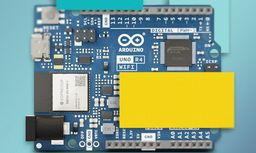The Raspberry Pi is, without a doubt, one of the best development boards on the market. Its combination of power, versatility and affordable price has made it a favorite among computer enthusiasts, students, developers and professionals from various sectors.
Since the release of the first version in 2012, this microcomputer has seen improvements in each iteration, constantly surpassing its predecessor in terms of performance and functionality.
The Raspberry Pi 5, for example, represented a significant leap compared to the third and fourth generation versions, incorporating a more powerful processor, more RAM and PCI Express connectivity that allows you to connect an M.2 SSD for fast data transfer. and super fast startup.
It should be noted that the Raspberry Pi Foundation, responsible for this single board, usually follows a cycle of launching new models every 3 or 4 years. This means that there is still some time before we see the hypothetical Pi 6 on the market.
However, if we base ourselves on the features and improvements that have been incorporated in previous versions, we can preview some of the key features that could make the Raspberry Pi 6 an even more impressive device and versatile than its predecessors.
6 features that could make the Raspberry Pi 6 the best microcomputer

Raspberry Pi
More RAM options: The current memory options for the Raspberry Pi are 4 GB and 8 GB. For more demanding projects, such as virtual machines or machine learning, more RAM would be needed. The Raspberry Pi 6 would be perfect if it could offer 16GB or even 32GB RAM options to meet these needs.
2.5G Ethernet: A desired feature for the sixth generation board would be the inclusion of a 2.5G Ethernet port. This would allow for a faster and more stable connection for projects that require high data transfer speeds, such as NAS servers and multimedia centers.
Better Windows Compatibility: While the Raspberry Pi has traditionally been associated with Linux, the growing popularity of Windows on Arm (WoR) opens up new possibilities. The Pi 5 can already run Windows 11 with some limitations, but the Raspberry Pi 6 could offer a much smoother and more compatible experience.
Hardware coding: The Raspberry Pi 5 is capable of playing 4K video without problems, but video encoding is still a slow process in software. The new board should include support for VP9 and H.264 hardware encoding, which would make it ideal for streaming and other multimedia tasks.
USB-C ports: The inclusion of more USB-C ports would be a welcome addition to the Raspberry Pi 6. This would allow for greater versatility and compatibility with high-speed peripheral devices such as portable SSDs, among others.
M.2 port directly on the board: The addition of an M.2 port would be a significant improvement for the Pi 6. This would allow users to directly connect NVMe drives without the need for additional adapters, improving the performance and versatility of the device.
In addition to the features mentioned above, which are mere speculations, There are other aspects that could be improved on the Raspberry Pi 6such as a competitive price, greater availability and better technical support, are some of them.
Without a doubt, the next board would have the potential to be an exceptional microcomputer. With the aforementioned improvements and features, it could become the ideal tool for a wide variety of projects, from home automation to software development.
















![[Img #74664]](https://thelatestnews.world/wp-content/uploads/2024/12/James-Watson-The-controversial-genius-behind-the-double-helix-300x200.jpg)